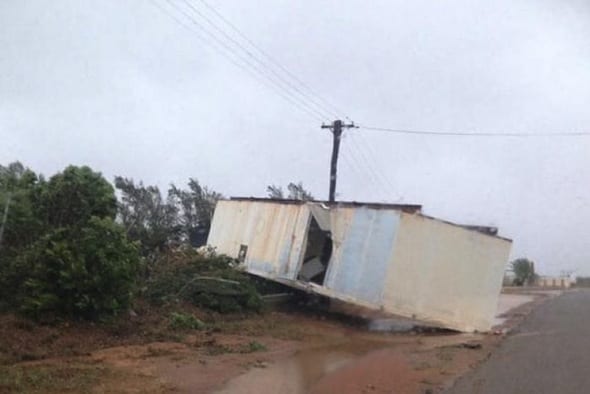In the wake of Tropical Cyclones Olwyn and Pam – the devastating 250km/h winds of the latter resulting in Vanuatu’s ‘worst natural disaster in living memory’ – we are reminded of how vulnerable centralised electricity grids are to increasingly intense extreme weather events.
In Australia, the category three Cyclone Olwyn tore through the WA towns of Exmouth, Coral Bay and Carnarvon on Friday, leaving power blackouts and water shortages in its wake – a situation Carnarvon Shire president Karl Brandenburg described as “critical” for the town’s 9,000-odd people. In Exmouth, Olwyn caused a total loss of power for all customers on the Horizon Power grid.

On the nearby Thevenard Island, however, a relatively newly installed solar-hybrid mini grid not only survived the storm, but continued running throughout, on stored battery power.
The 325kW system, which was designed and built by local WA company Energy Made Clean, was launched in December last year, in an effort to reduce the Mackeral Islands Tourist Resort’s reliance on diesel. It has since achieved renewable penetration of more than 90 per cent.
The mini grid (pictured below) consists of 1,200 solar panels and 512 lithium ion batteries (640kWh), and supplies the power needs of the eco-tourism resort in WA’s northwest Pilbara Coastal region, 22km offshore from the town of Onslow.

Monitored throughout the storm by its Perth-based developers, it was found to have continued to provide electricity to critical loads on the island, as well as real-time wind and solar data, throughout the storm.

According to EMC, the solar array was engineered for Category D cyclonic conditions, so it was encouraging to find that all of the system’s solar inverters came online when the sun came up on the Saturday morning.
The result confirms what we have already learned from other such cases, like when US “superstorm” Sandy blacked out New York City’s lower Manhattan, all except for the Washington Square campus of New York University, whose 13.4-MW combined heat and power (CHP) micro-grid system continued to power its 26 buildings.
As leaders at all levels of US government concluded after Sandy, microgrids are shaping up to be key components to improving “energy resiliency”, and to mitigating the crippling impact of disasters fueled by climate change, with their ability to keep power flowing, even in the event of a large-scale power outage.
And the New York State Energy Research and Development Authority (NYSERDA) commissioned a year-long study on the role of microgrids in providing mission-critical backup power generation.










